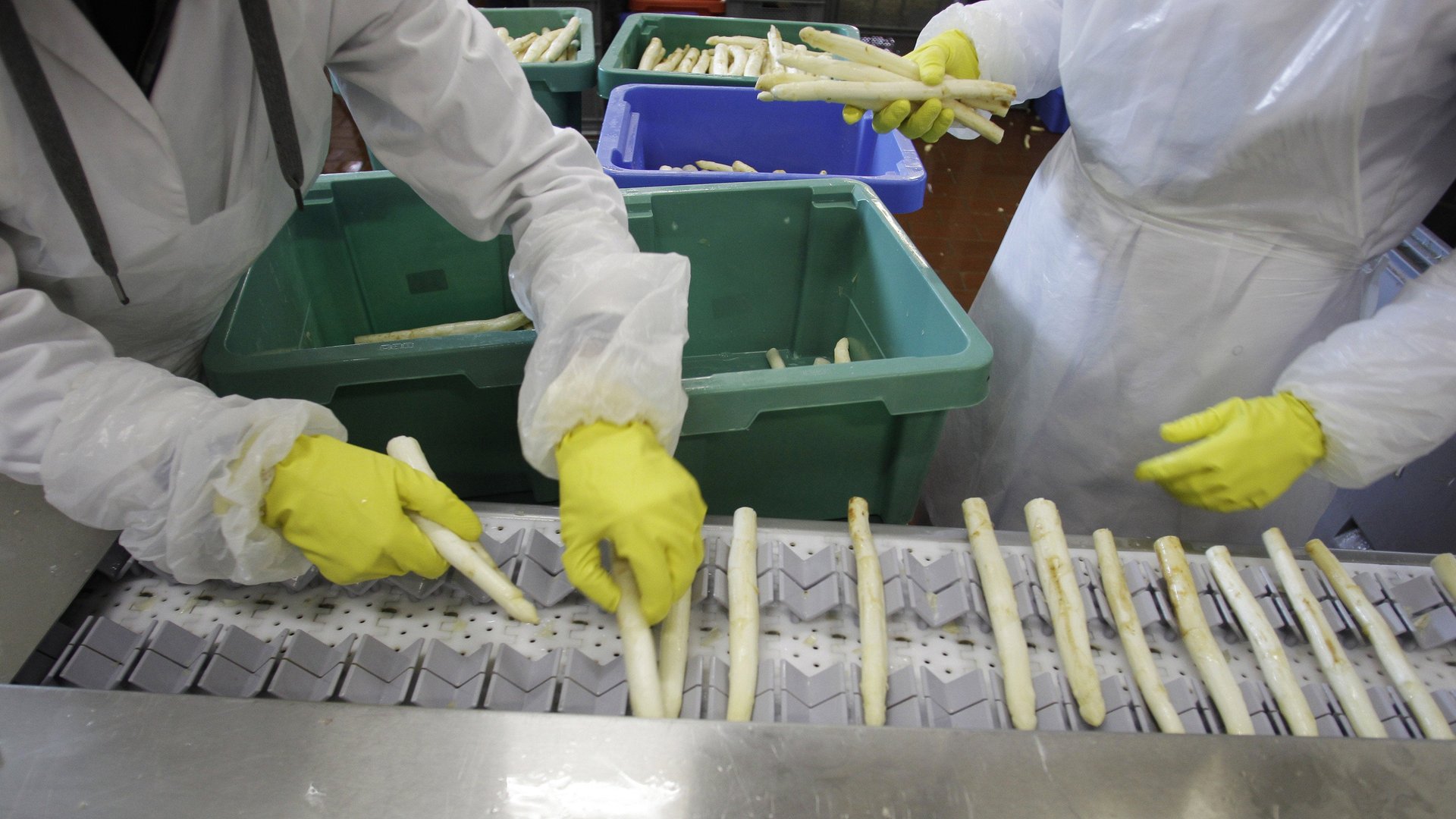China is probably not really growing 7 million tons of asparagus every year
It’s Spargelzeit (asparagus season) in Germany—the celebrated time from late April to June 24 when white asparagus (aka white gold, edible ivory, the king of vegetables) is everywhere. It grows white thanks to a horticultural technique called blanching, in which the stalks are hidden from the sun with dirt and never allowed to develop chlorophyll. Green asparagus is cheaper and not as ubiquitous.


It’s Spargelzeit (asparagus season) in Germany—the celebrated time from late April to June 24 when white asparagus (aka white gold, edible ivory, the king of vegetables) is everywhere. It grows white thanks to a horticultural technique called blanching, in which the stalks are hidden from the sun with dirt and never allowed to develop chlorophyll. Green asparagus is cheaper and not as ubiquitous.
Huts selling white asparagus dot the northwestern European countryside, and basically every restaurant, from streetside cafés to the swankiest dining spots, offers asparagus specials. Michelin-starred Dutch restaurant De Zwann attempted its first asparagus delivery of the season by drone, a stunt that went down in flames.
But despite asparagus’ celebrated status in Europe, the country producing the most of it is China, with Peru coming in second. According to the 2012 trade numbers, the most recent released by the UN Food and Agriculture Organization, China produced more than seven million tons of asparagus in 2012, but exported only a fraction of a percent of that.
Asparagus production in 2012 (metric tons)
Source: FAO
So one wonders: How is that even possible, and what on god’s green earth is China doing with all that asparagus? Well, there’s more to the story. “The FAO figures are massively inflated,” says Loren Puette, director of ChinaAg, which tracks the country’s agriculture industry. (Regarding exports topping production numbers, he also notes that in some cases: “Some countries seemingly export more than they produce because those exports are actually re-exports. For example, the Netherlands imports a good from the USA and then re-exports the same good to a country like Germany.”)
A USDA report said China’s asparagus production was going to be 210,000 tons in 2010, and 240,000 in 2011. Puette says those numbers are much closer to the truth. He estimates that China’s asparagus production for 2014 was about 292,000 tons. “Even with the lowered production estimates, China is still a major asparagus producer.”
That puts Peru, which historically had no asparagus, at the top of the dirt pile. The US encouraged Peru to grow asparagus rather than cocaine in the 1990s, and it has become the third-most important export for Peru—its primary destination, the United States. China started allowing imports of asparagus from Peru in 2013 because of quality issues with local product, ChinaAg reported. “Fresh asparagus from the US and Peru are perceived within China as being of better quality,” Puette says—a status vegetable, if you will, in the wealthy cities of Shanghai and Hong Kong.
Asparagus is time-intensive to harvest, which gives countries with low labor costs a distinct advantage. China’s Shanxi province has a surplus of cheap farm labor, Puette notes, and much of the fresh product is sold cheap to processors who then export to countries where they can undercut local prices.
Germans, for what it’s worth, still highly value fresh, locally grown asparagus. Simon Schumacher, executive director of the Verband Süddeutscher Spargel- und Erdbeeranbauer e.V. (Southern Germany Association of Asparagus and Strawberry Growers), says the season started 10 days later than last year because of cool temperatures: “Prices were satisfactory. Yields are good. The quality is excellent.”